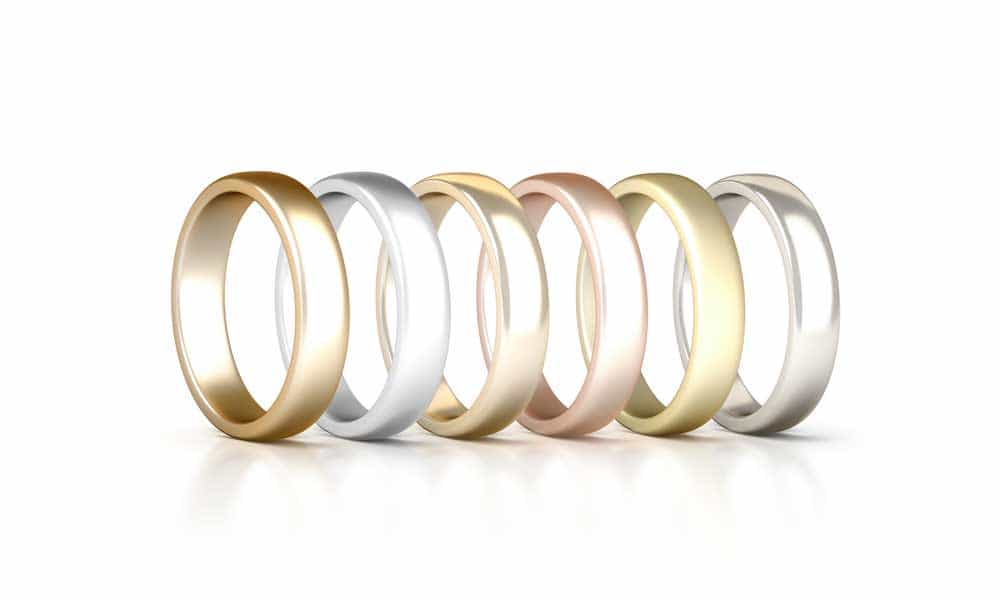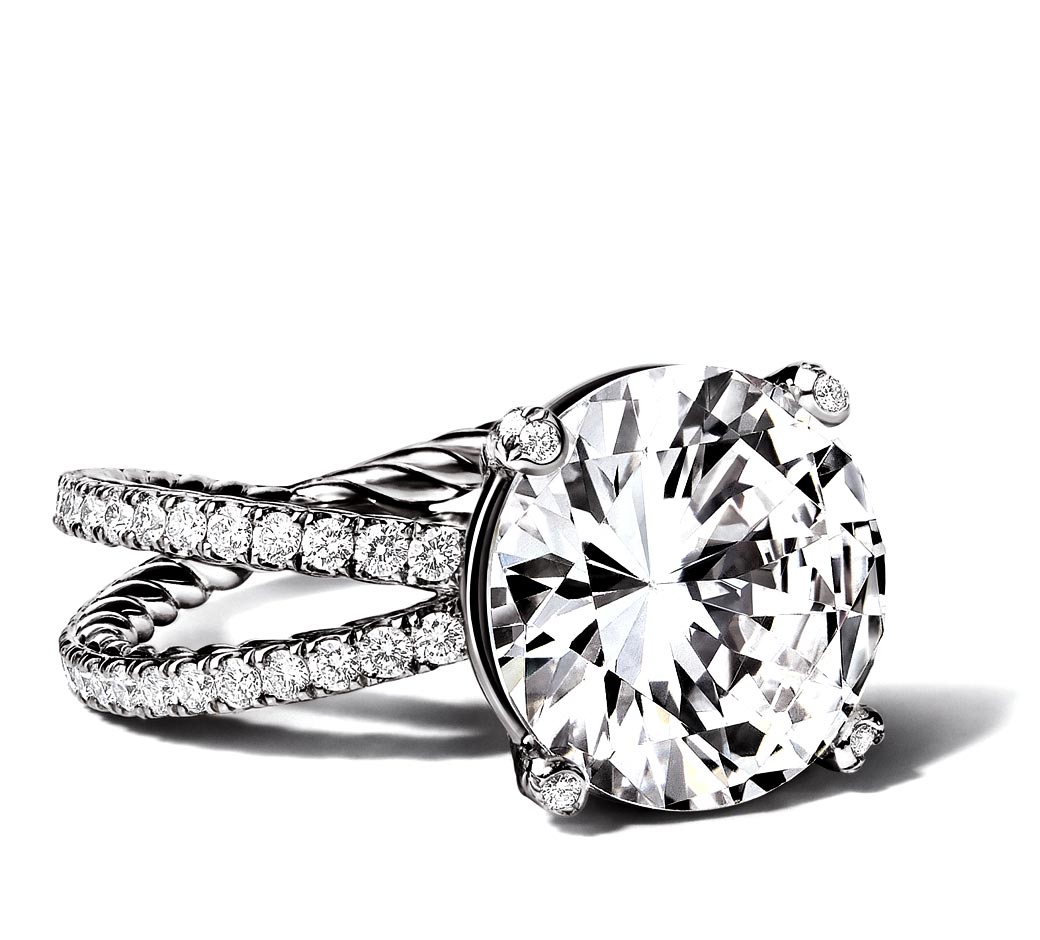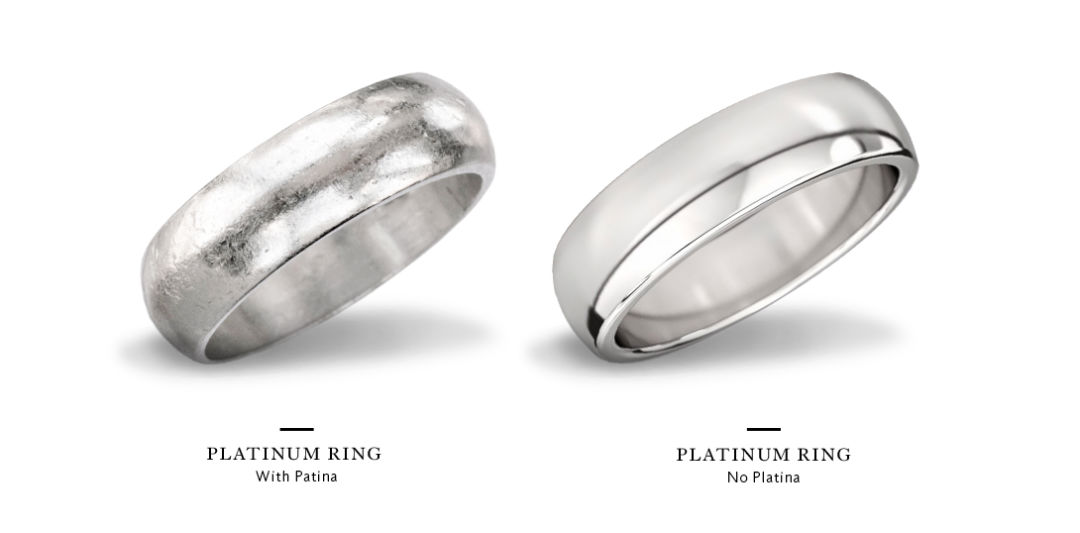Platinum vs 18K White Gold
Platinum vs 18K White Gold
Is platinum better than gold?

I'm sure everyone has fallen victim to the belief that an item that's more expensive must be better quality. However, this can be an expensive mistake especially when it comes to engagement rings. Whilst platinum may be more expensive, it may not necessarily be the best choice for you.
The Best Metal for your Engagement Ring
 18K white gold is the most appropriate choice of metal for nearly all engagement rings and here's why...
18K white gold is the most appropriate choice of metal for nearly all engagement rings and here's why...
18K white gold is a relatively hard material that is more than able to withstand the pressures of daily use without scratches and bending out of shape. Only if the ring is subjected to a very hard impact will the ring potentially crack. For example, hitting your engagement ring with a hammer or throwing it across the room in a fit of rage (It's happened!).
On the other hand, platinum is a lot more durable and will be able to withstand such forceful impacts without cracking. But whilst denser, platinum is very malleable. This means that with daily use, platinum may bend out of shape and is a lot more prone to scratches and dents.
This is particularly important to remember in regards to the prongs of the setting as they are likely to bend out of shape. Most jewellers will even secure the prongs with more platinum just to try and prevent the stone from becoming less secure. This will clearly impact the appearance of the finished ring especially if you are looking for a daintier design.
What is the Colour Difference between Platinum & 18K White Gold?
 Platinum is a naturally occuring white metal that usually contains 95% platinum and 5% pure alloys. Whilst the color of a platinum band will not change dramatically, the band will lose its shine and develop a dull grey finish after continued usage. This is called a patina and can be re-polished to regain its shiny appearance.
Platinum is a naturally occuring white metal that usually contains 95% platinum and 5% pure alloys. Whilst the color of a platinum band will not change dramatically, the band will lose its shine and develop a dull grey finish after continued usage. This is called a patina and can be re-polished to regain its shiny appearance.
Just like platinum, 18K white gold will also change appearance through its lifespan as it is a metal alloy consisting of 75% gold and 25% alloy. Of course, gold is naturally yellow so to give the metal its white gold appearance, it is usually plated in other metals such as rhodium. As the yellow gold is still present beneath this plating, 18K white gold rings wear down to expose a yellow tint through time. The ring can be replated to regain its original colour.
Is Platinum more Expensive than 18K White Gold?
Platinum is around 2 and a half times more expensive than white gold. This is not only due to the cost of the materials but also for the increased labour involved. Platinum is more difficult to work with so even experienced craftsmen will require more time to work with the material.
Additionally, platinum is a lot denser so the ring will feel heavier than an 18K white gold setting. As the price of precious metals is calculated by weight, this will increase the price significantly.
Is it Harder to Resize a Platinum Ring?
Yes, it will always be harder for a craftsman to resize a platinum setting due to the malleability of the material. This is especially true for settings that have small diamonds on the band as all the normal risks involved in resizing a ring are multiplied.
18K white gold is the most appropriate choice of metal for nearly all jewellery. However, it is always important to assess your lifestyle and understand what strain the ring will be under. For most women, 18K white gold will be more than strong enough to withstand the bumps and bruises from daily use. It is only recommended to have a platinum setting if the ring will be exposed to industrial equipment or repeated forceful impacts that go beyond standard wear and tear.









